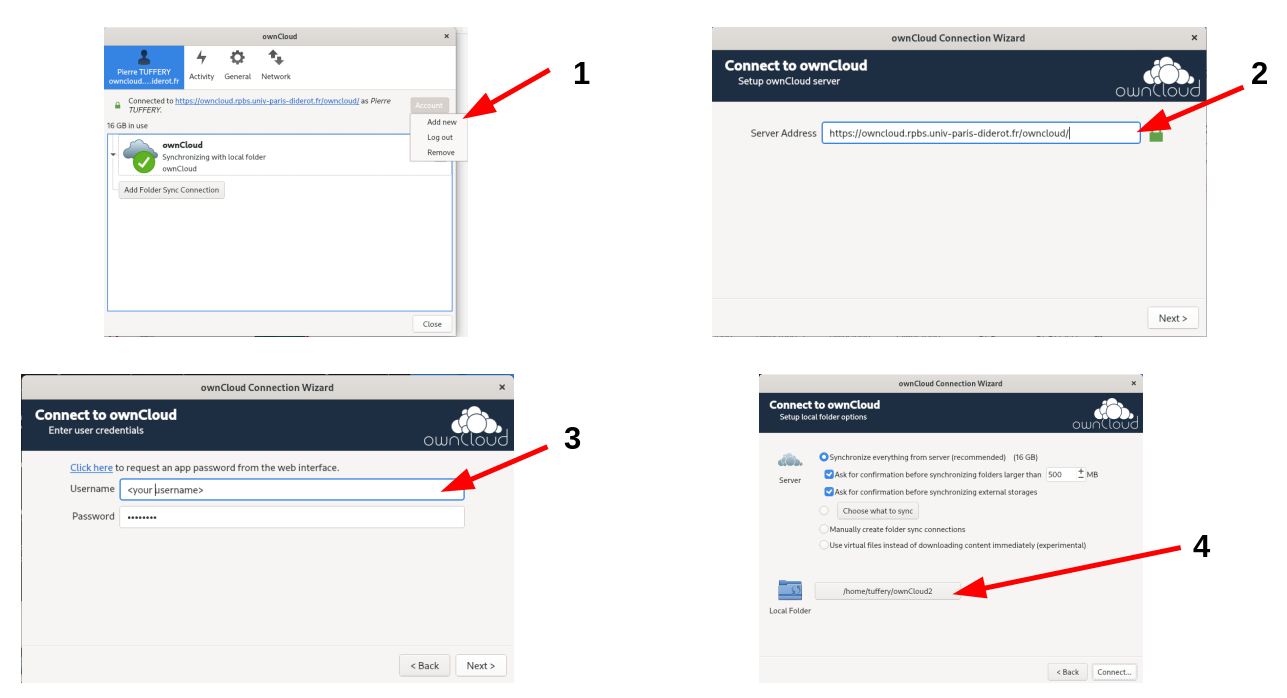
- #Owncloud force sync how to
- #Owncloud force sync install
- #Owncloud force sync update
- #Owncloud force sync manual
In our case this would be: $ owncloudcmd -s /path/to/owncloud/folder the -s? Well, by default the owncloudcmd outputs a pretty verbose log to the terminal. If no client is configured (which, in our case, is not configured), or if you choose to use a different user to synchronize, you can specify the user password setting with the usual URL pattern.
#Owncloud force sync how to
Next, let's first take a look at how to use the owncloudcmd command: $ owncloudcmd sourcedir owncloudurlīy default, owncloudcmd reads the client configuration and uses the credentials of the GUI synchronization client. The owncloud-client package contains the owncloudcmd tool and supervisor is a process monitoring tool which will make sure our process is active the entire time we want it too. Now we have owncloud-client package and supervisor installed on our system.
#Owncloud force sync install
$ sudo apt-get install owncloud-client supervisor
#Owncloud force sync update
This doesn't sound entirely waterproof but luckily we can automate all this with the use of supervisord! Wanna know how?įirst, install the following packages on your debian / ubuntu system (other distro's might work differently with packagenames but the setup is quit the same): $ sudo apt-get update The owncloudcmd tool does not provide a form of automated synchronization, like with the usage of a owncloudcmd daemon or inotifywatcher, we must run this command each given time so we can check for file differences between the client and server versions of our owncloud folder and synchronize any differences. Luckily it also stores some (meta)data inside your local owncloud folder so it knows where it stopped and resuming the process would not be a big trouble. Uploading these chunks can sometimes cause a timeout, meaning your owncloudcmd client will abort the upload. This sounds like what we want!īut when transferring big files it may sometimes fail as it will slice your big files into smaller bits, called chunks. Now, what is owncloudcmd? Owncloudcmd basically has all the logic and routines for synchronizing your data and is used by your owncloud GUI but can also be run manually from the commandline.
#Owncloud force sync manual
Strange errors like "resource is full, no more space left on device" where occurring, even when STACK was mounted on a 3TB disc with atleast 50% free disc space left.Īfter contacting TransIP's support desk they provided me with a few manual pages from OwnCloud, where I found the OwnCloudcmd tools. Unfortunately this did not work for me either, as I was transferring around 500GB of data and the system didn't provide enough resources for this. This would just leave you to choose whether you'd like to copy or rsync your data to the mount and be done with it. The next solution would be mounting STACK over webdav (using davfs2). This however did not work for me, as my data is installed on a Debian server, which I almost solely use over SSH. The OwnCloud manual suggests installing their synchronization tools. This turned out to be quit more difficult than I had expected, but with some digging around (and some support from their side) I've eventually found the "solid" setup to properly transfer all of my data safely.Īs we all know, the storage for STACK is TransIP's old hardware, implemented with a custom OwnCloud setup. I might research this myself as I will be performing another big sync very soon.Īs a fairly happy TransIP customer/user I've finally decided to transfer my personal data towards their latest service named STACK.

It might still be a valid solution to the problem I was facing while synchronising with Transip's Stack Storage and my home server, I feel like there should already be a better solution. Please take in mind that this article was written in February back in 2016. Please be aware of this before extracting and/or applying anything from this article. This article was written quite some time ago and might not be relevant anymore.


 0 kommentar(er)
0 kommentar(er)
